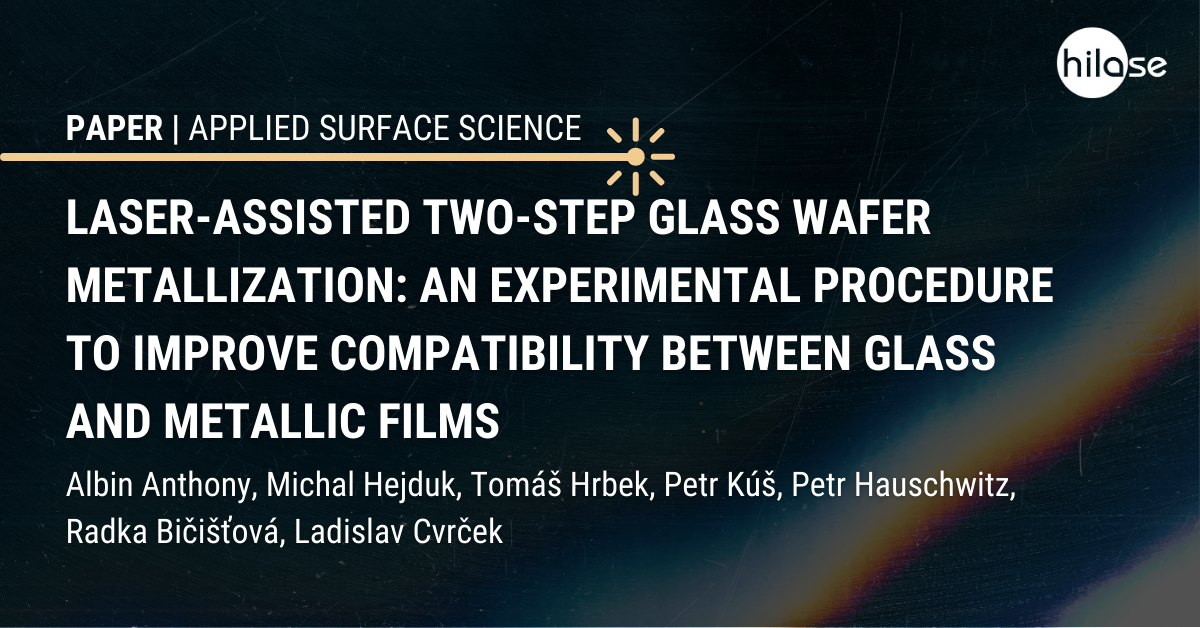HiLASIANS from the Laser Micromachining (LMM) team, Petr Hauschwitz (team leader) and Radka Bičišťová (Ph. D. student), are the co-authors of a new paper published in the Applied Surface Science journal.

They collaborated on the study, titled Laser-assisted two-step glass wafer metallization: an experimental procedure to improve compatibility between glass and metallic films, with researchers from the Charles University Faculty of Mathematics and Physics (Albin Anthony, Michal Hejduk, Tomáš Hrbek, Petr Kúš) and Faculty of Mechanical Engineering of CTU in Prague (Ladislav Cvrček).
Abstract:
We report a simple and efficient two-step experimental procedure of glass metallization using laser microstructuring at ambient conditions. An adhesive pattern was created on the glass substrate using a laser, which imposes mechanical interlocking. An adhesive Cu layer was deposited on the glass substrate by magnetron sputtering and then electroplated with a functional Cu layer. Due to the unique surface structure created on the glass using laser, we achieved a thick layer of Cu metal film with high adhesion strength, well-defined grains and grain boundaries, and low surface roughness. The total thickness of the grown film was 11.4 µm, with an average surface roughness of 1.2 µm. The magnetron-sputtered coating did not show delamination from the glass substrate at a critical load of 60 N. The proposed method of glass metallization will lead to the realization of glass-based circuit materials that can be used in high-frequency electronic devices. Also, this procedure will be an alternative to chemical-based copper plating, which involves multiple processing steps and high-cost chemicals.








